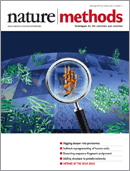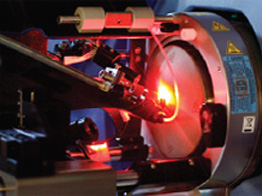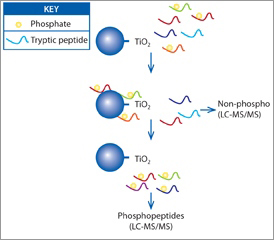APAF Newsletter Vol. 3 No. 1
Welcome to APAF's Autumn 2013 newsletter.
Nature Methods has named “Multiple reaction monitoring” as Method of the Year for 2012. This is a targeted mass spectrometry method akin to Western Blotting for cell biologists, but is arguably superior as we obtain structural information to ensure correct peptide identification, can be highly multiplexed and is very precise for quantitative information – all without the need for antibodies! APAF has been a leader in the application of MRM and in this newsletter we are pleased to bring this technique to your attention. Read More
“nature methods” Method of the year 2012 SRM-MS

Selected reaction monitoring mass spectrometry (SRM-MS) is a highly selected and sensitive method used to quantitate protein/peptide abundances in complex biological samples for targeted quantitation of proteins. SRM-MS is commonly utilised for small molecule analysis but has now developed as a mainstream technology for proteomics. SRM-MS assays are compatible with multiplexing, enabling the quantitation for 10s-100s of analytes in a single MS run. For absolute quantitative analysis, synthetic peptides containing a stable isotopically labelled amino acid are used as standards. This enables the performance of each assay to be assessed for limits of detection/quantitation and linearity. SRM-MS assays can also be used for relative quantitation of analytes across runs. Read more
Quantitative and comparative protein analysis by mass spectrometry

There are numerous techniques available now to identify protein differences in biological samples – known as comparative proteomics. With cell lines SILAC (Stable isotope labelling by amino acids in cell culture) can be used for metabolic labelling of proteins, although the “heavy” amino acids can be expensive. Chemical labelling techniques are an alternative approach. One of the earlier chemical labelling techniques for mass spectrometry analysis was ICAT (isotope-coded affinity tags) and this was quickly followed by the improved chemical labelling technique iTRAQ (isobaric tags for relative and absolute quantification). iTRAQ is the protein equivalent of transcriptomics. Read More
Measuring Protein Phosphorylation - How APAF can help you?

Protein phosphorylation is a signalling mechanism that regulates most aspects of cellular life. The enzymes responsible for protein phosphorylation, the protein kinases constitute one of the largest family of enzymes encoded by the human genome.
Regulation of protein function by phosphorylation is a fundamental mechanism used by eukaryotic organisms. Phosphorylations are a rapid chemical way to either activate or deactivate the protein substrates. Dysregulation of protein phosphorylation is commonly associated with disease. For example, in the case of cancer, mutations in regulatory kinases (e.g. BRAF) can result in hyper-phosphorylation of substrates, effectively jamming on signalling pathways that lead to cell proliferation. Read More
